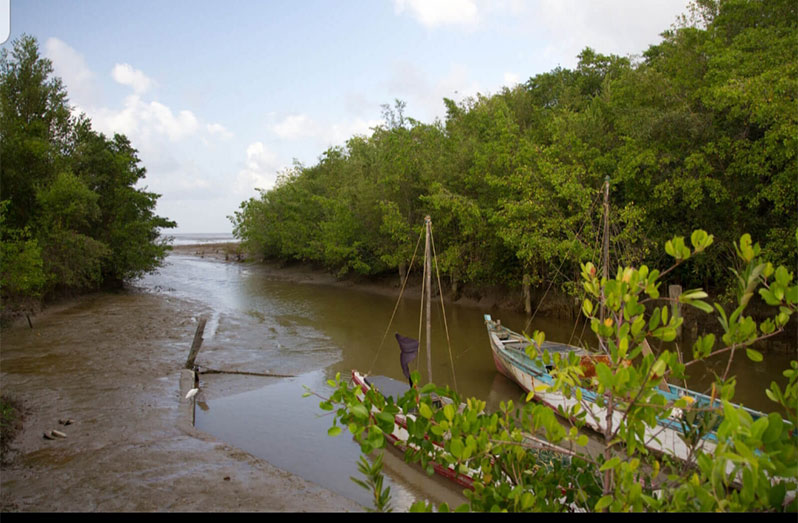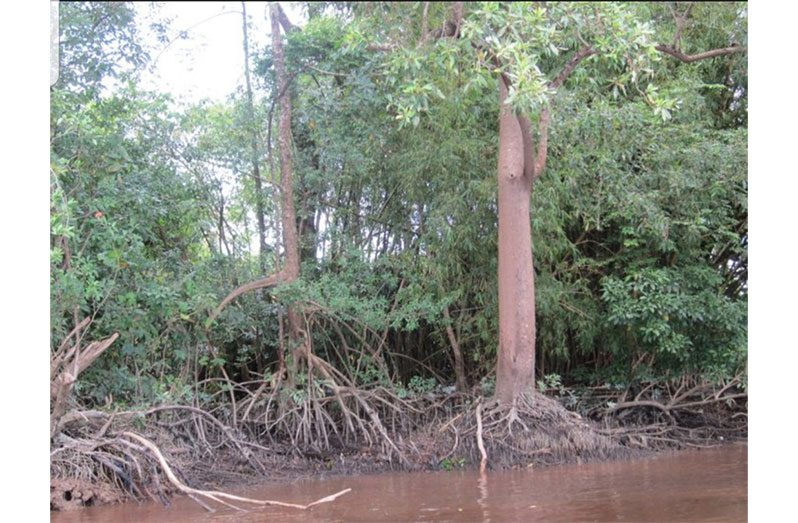What are Mangroves?
MANGROVES are trees and shrubs that grow in saline coastal habitats in the tropics and subtropics. They normally form plant communities along the coastal areas between the land and sea where they are flooded by tides. This is called the ‘intertidal zone’. Mangroves have the extraordinary ability to filter out salt through their roots and excrete it from their leaves, making them highly adaptive to this habitat.
Distribution…
The mangrove vegetation of the world can be divided into two broad categories:
✯ The “old world” mangroves in the pacific region extend from the east coast of Africa to the South Pacific.
✯ The “new world” mangroves, found along the west coast of Africa; the North America (east coast) and South America (coastline of Guyana, Venezuela Suriname, French Guiana) and Brazil and on the west coast between Mexico and northern Peru.
✯ In Guyana, mangroves grow extensively along the coastline (where the land meets the sea) and can be seen in estuary of rivers (Demerara, Berbice, Essequibo).
Characteristics…
❖ Mangroves thrive in areas of high rainfall and moist air.
❖ Their soils contain a lot of salt and water and little oxygen. The mangroves grow best in clayey soils, which are formed by the build-up of water-borne soil particles.
❖ Mangroves have shallow roots, which do not penetrate deep into the soil; therefore, they are very vulnerable to strong winds and waves.
❖ Mangroves are influenced greatly by the tides of Guyana’s coastal plain. Mangrove seeds are dispersed by water, carrying them upstream and downstream. Tides regulate the spread of mangrove forest and the salinity concentration of water in mangrove areas.

Types of Mangroves in Guyana
In Guyana there are three species of mangroves in Guyana, namely:
✯ Red Mangrove or (Rhizophora mangle)
✯ Black Mangrove or (Avicennia germinans)
✯ White Mangrove or (Laguncularia racemosa)
Importance…
As insignificant as they may seem, mangroves play a very important role in the environment. As we walk along the seawall, mangroves line the sea bank but we carelessly destroy them and don’t even stop to think what their roles are. Below are just some of the important functions of Mangroves in the environment:
✯ Protect our coastline against erosion
✯ Provide fuel-wood for domestic cooking
✯ Many traditional medicines are made from mangroves, including those for treating skin disorders, headaches, rheumatism, snake bite, ulcers, etc.
✯ Support wildlife and shelter grounds for aquatic species
✯ Offer good sites for bee hives
✯ Bark is used for the extraction of tannin
✯ Assist in reducing water pollution by filtering pollutants present in the water.
✯ Link marine and terrestrial ecosystems
✯ Poles are used for mooring boats and supporting nets
✯ Provide aesthetic, scientific and educational benefits due to the uniqueness of the ecosystem
✯ Vines can be used to make handicrafts.
✯ Black mangroves may be the best land stabilizer due to easier seedling transport, quick aerial root production, underground root systems increase sediment holding capabilities, higher tolerance to cold temperatures, better ability to inhabit “artificial” sites (dredge, fill, etc.).
✯ During extreme storms and hurricanes mangrove forests protect landward coastal area by mitigating damage from waves, currents, and winds.
A variety of organisms utilise mangrove habitats. Under the prop root complex and tidal channels lay a multitude of marine species in a delicate balance. In addition, the fine, anoxic sediments under the mangroves are a sink for various heavy (trace) metals.
Help us protect our precious mangroves! We need them more than they need us!




.jpg)










